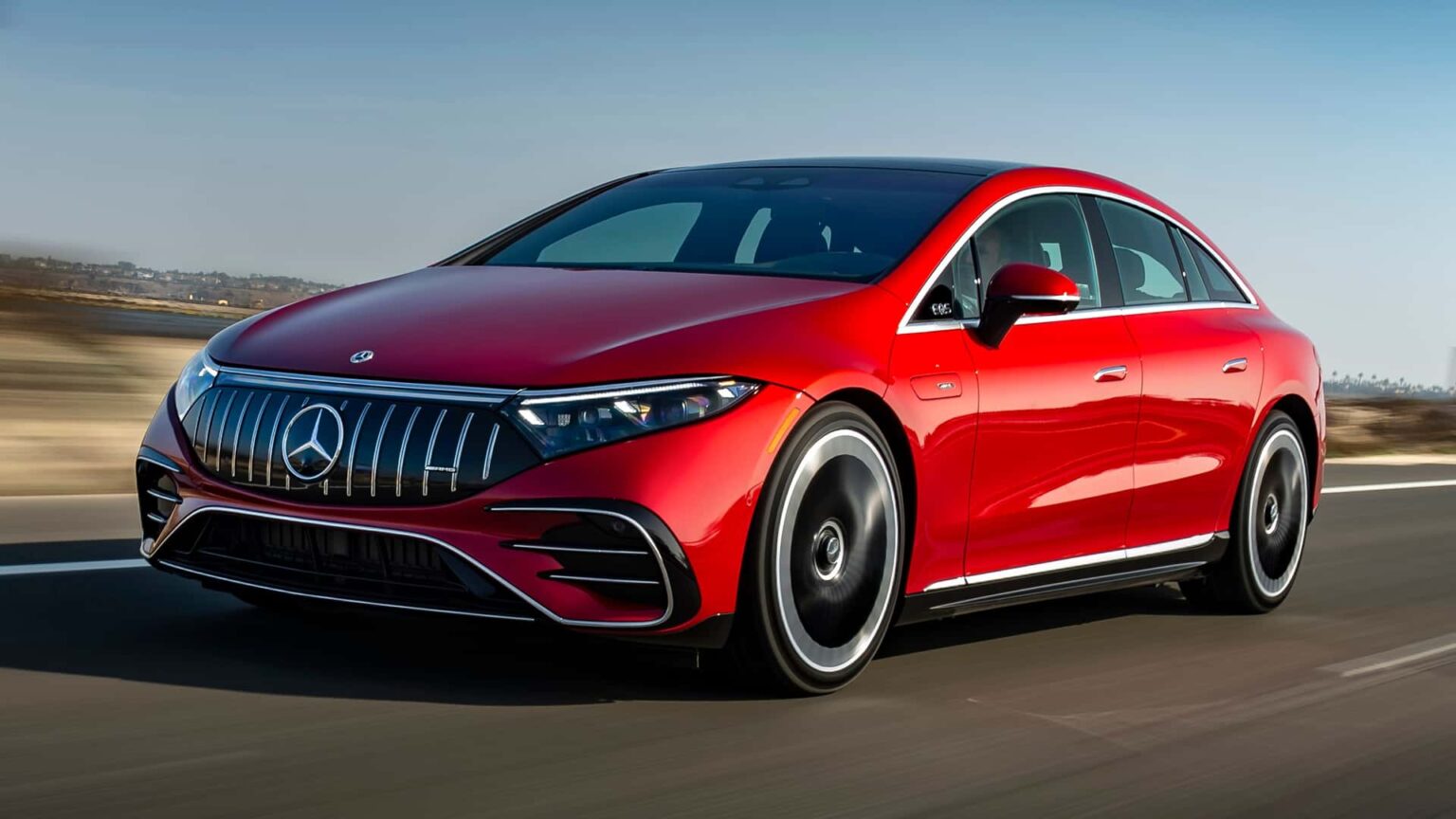Beauty is in the eye of the beholder, but the negativity surrounding the design of Mercedes’ flagship electric car seems nearly universal. I must be in the minority because I don’t think the EQS looks bad, especially in real life. Sure, it doesn’t have the presence of an S-Class, but it was never intended to be a direct replacement, so perhaps we’ve been judging it too harshly. Be that as it may, the jellybean design, which prioritizes aerodynamic efficiency above all else, hasn’t exactly won over buyers.
Through the voice of its design boss, Mercedes has offered a few explanations as to why the EQS never really caught on. Gorden Wagener told Autocar the range-topping EV was launched “10 years too early,” suggesting it’s simply too futuristic for its own good. However, the car has already been on the market for about four years, and we haven’t seen much shift in public perception. People still aren’t fans of the design language used across the EQ lineup.
Wagener explains that the EQS failed to resonate with S-Class buyers because “it’s a completely different car,” one that wasn’t developed as a chauffeur-driven luxury sedan with a long hood like the conventional flagship. In hindsight, the man in charge of design at Mercedes suggests that the brand should have marketed the car differently, “more like a futuristic CLS, S-Class Coupe or something like that.”
Mercedes has already acknowledged that it has learned from its past mistakes. It’s now unifying the design language across combustion and electric models. The next-generation S-Class will spawn a zero-emission version that’s expected to replace the EQS. The egg-shaped styling is on the way out, although the shift won’t happen overnight. The current-gen S-Class is slated for a facelift in 2026, so its successor probably won’t arrive until the end of the decade.
In the meantime, Mercedes’ decision to merge ICE and EV models is already becoming evident across its lineup. The new CLA looks nearly identical whether it’s powered by gasoline or electricity. Furthermore, the upcoming electric GLC won’t be badged as EQC, as the company is phasing out the separate EQ lineup. It’s a clear sign that Mercedes is mirroring BMW’s strategy by offering various powertrains under a single model family. The electric G-Class already follows that playbook, skipping the EQG name in favor of G580 with EQ Technology.

In a previous interview with ABC News, Wagener defended the EQ design language, describing it as “purposeful and very progressive.” He argued that the underwhelming demand for the EQS isn’t necessarily a result of its styling but instead of how customers perceive EVs in general: “One problem with EVs is customer perception. The customer sees it like an electronic device. Combustion cars are still being perceived like a Chrono watch, much more long-lasting.”
Mercedes has already attempted to make the EQS resemble the S-Class by incorporating a “front grille” reminiscent of the company’s traditional crown jewel. A second facelift is in the works, with the three-pointed star motif integrated into the headlights to echo the new CLA. This upcoming refresh suggests the EQS will remain in the lineup for at least a few more years, which makes sense considering the electric S-Class isn’t expected until around 2030.
Read the full article here



